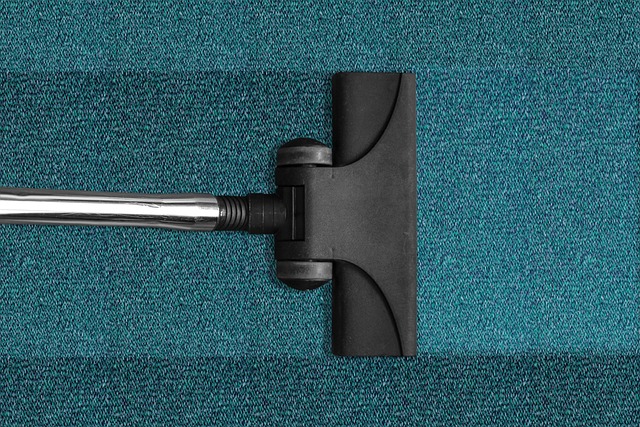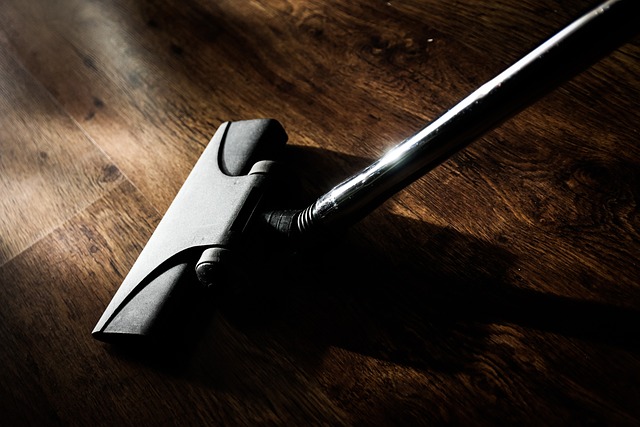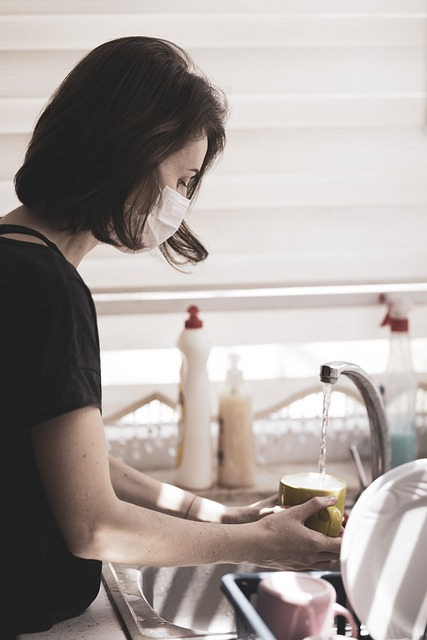Upholstery odors result from organic materials breaking down due to various factors, with different fabric types absorbing or retaining scents differently. Effective cleaning begins with identifying the odor source and pre-treating stains. Using enzymatic cleaners and specialized tools, along with spot-testing, ensures safe and thorough upholstery odor removal. A systematic approach, including natural remedies and regular vacuuming, prevents future issues.
Tired of dealing with stubborn upholstery odors? This comprehensive guide provides an in-depth look at effective upholstery cleaning methods. From understanding common causes like pet messes and spills to choosing the right products, we cover it all. Learn pre-treatment techniques, step-by-step cleaning processes, and natural remedies for a fresh, scent-free space. Additionally, discover maintenance tips to prevent future issues. Master these upholstery cleaning secrets and reclaim your odor-free haven.
Understanding Upholstery Odors: Common Causes and Types

Upholstery odors can stem from a variety of sources, making it essential to understand common causes before tackling the issue. Often, these smells are a result of organic materials breaking down over time. Dust, sweat, and oils from frequent use or poor ventilation can lead to a buildup of odors in fabrics. Additionally, spills and leaks introduce bacteria and moisture, which contribute to unpleasant aromas.
Different types of upholstery materials have distinct characteristics affecting odor retention. Fabric types like cotton and linen absorb and trap scents easily, while synthetic blends might be more prone to retaining chemical smells from cleaning products or environmental pollutants. Identifying the cause behind an odd smell is crucial for effective upholstery cleaning and ensuring a fresh, clean environment.
Pre-Treatment: Preparing Your Upholstery for Cleaning

Before tackling any upholstery odor removal, proper pre-treatment is crucial for effective cleaning. Start by vacuuming the affected areas thoroughly to remove loose dirt and debris. This initial step helps prepare the fabric, ensuring that cleaning solutions can reach deep into the fibers. Avoid using harsh chemicals or over-saturating the upholstery, as this could damage the material or leave residues.
Additionally, identifying the source of the odor is key. Different odors require specific treatments. For instance, pet odors might need a specialized enzymatic cleaner, while smoke or mildew smells may demand a stronger solution. Treating the root cause ensures that the cleaning process addresses the issue comprehensively during the upholstery cleaning process.
Choosing the Right Cleaning Solutions and Techniques

When it comes to upholstery odor removal, selecting the right cleaning solutions and techniques is paramount. Different fabrics require specific approaches; what works for cotton may damage silk. Look for versatile, enzymatic cleaners designed for deep penetration and safe use on various materials. These solutions often include natural enzymes that break down odor-causing compounds without harsh chemicals.
In addition to the cleaner, consider tools like brushes or steamers tailored for upholstery care. Brushing helps loosen dirt and debris embedded in the fabric fibers, while steam cleaning not only sanitizes but also eliminates stagnant odors by deep cleaning the material. Always spot-test any cleaning solution first to ensure it won’t discolor or damage the upholstery.
Step-by-Step Guide to Effective Upholstery Odor Removal

Removing odors from upholstery can seem like a daunting task, but with the right approach and tools, it’s achievable. Here’s a step-by-step guide to effective upholstery odor removal:
1. Identify and Address the Source: Start by identifying what’s causing the odor. Common culprits include pet accidents, spills, mold growth, or simply accumulated dust and dirt. Addressing the root cause is crucial before proceeding with cleaning. For instance, clean up any liquid spills promptly to prevent mold development. If it’s a pet-related issue, consider using enzymatic cleaners designed to break down animal odors effectively.
2. Vacuum Thoroughly: Use a vacuum cleaner with a powerful suction and a brush attachment to thoroughly clean the upholstery. Pay close attention to crevices, seams, and any nooks where dust, debris, or even pet hair might be trapped. Regular vacuuming helps remove surface-level contaminants and prevents them from becoming embedded in the fabric fibers.
3. Pre-treat Stains (if applicable): If there are visible stains, pre-treat them using a suitable cleaner. For fresh spills, act quickly to minimize the odor’s impact. Apply a small amount of pet-friendly or mild detergent directly to the stain, gently rub it in, and let it sit for a few minutes. Rinse with a damp cloth and blot dry to avoid excess moisture that could set new stains.
4. Use Natural Odor Absorbents: Baking soda is an excellent natural deodorizer. Sprinkle it onto the upholstery, letting it sit for 15-20 minutes. Then, gently brush or vacuum it off. You can also try other absorbents like cornstarch or talcum powder, but baking soda has proven effectiveness against various odors.
5. Apply a Professional Upholstery Cleaner: For deep cleaning and odor elimination, consider using a professional-grade upholstery cleaner. These products contain powerful yet safe ingredients that penetrate fabric fibers to neutralise odors and remove dirt and stains. Follow the instructions on the product for best results.
6. Let it Air Out: Once cleaning is complete, allow the upholstery ample time to air out. Open windows and doors to facilitate ventilation, ensuring any remaining odor-causing molecules dissipate. The fresh air will help refresh the space and ensure a lasting clean smell.
Natural and Eco-Friendly Methods for Gentle Cleaning

When it comes to upholstery cleaning, natural and eco-friendly methods offer a gentle yet effective approach. These techniques are ideal for those who prefer a chemical-free environment or have specific concerns about health and safety. Baking soda is a popular choice; its mild abrasive properties help remove stains and odours without damaging fabrics. Simply sprinkle the baking soda on the affected area, let it sit for a few minutes, then brush it off—it’s as simple as that! Another natural cleaner, vinegar, can be mixed with water to create an all-purpose cleaning solution. This powerful yet safe mixture is perfect for wiping down upholstery and removing stubborn odours.
Plant-based essential oils not only add a fresh scent to your space but also possess antimicrobial properties. A few drops of tea tree or lavender oil in your cleaning solution can help eliminate bacteria and leave your furniture smelling delightful. These natural methods are cost-effective, non-toxic, and beneficial for both your health and the environment, making them an excellent choice for regular upholstery cleaning routines.
Dealing with Persistent Odors and Stains

Dealing with persistent odors and stains in upholstery can be a challenging task, but with the right approach, it’s achievable. The first step is to identify the source of the smell or stain. Different substances emit unique scents and leave distinct marks, so understanding this initial clue is key. For example, pet odors often stem from urine or dander accumulation, while food stains may be caused by grease or oil-based substances.
Once the root cause is determined, the next step is to employ effective cleaning methods. This could involve using specialized upholstery cleaning solutions designed to tackle tough stains and odors without damaging the fabric. Testing a small, inconspicuous area first is crucial to ensure the solution is suitable for the material. For stubborn smells, consider natural remedies like baking soda or vinegar, which can absorb odors and leave fabrics fresh.
Maintenance Tips to Prevent Future Upholstery Odor Issues

Regular upholstery cleaning is key to preventing future odor issues. Vacuuming your furniture at least once a week helps remove dust, dirt, and dead skin cells, which can contribute to unpleasant smells. Use a vacuum with a HEPA filter for better results, as it traps tiny particles that traditional filters might miss. Additionally, spot-cleaning spills immediately with a suitable cleaner prevents odors from setting in. For deep cleaning, consider professional upholstery cleaning services that use environmentally friendly and safe methods.
To complement your cleaning routine, keep your furniture well-ventilated and avoid heavy moisture exposure. Moist environments can foster bacterial growth and contribute to musty smells. Use air fresheners sparingly, as they might mask odors instead of addressing the root cause. Regularly washing throw pillows, blankets, and other washable textiles in hot water and using fabric softener also helps keep your upholstery smelling fresh.
